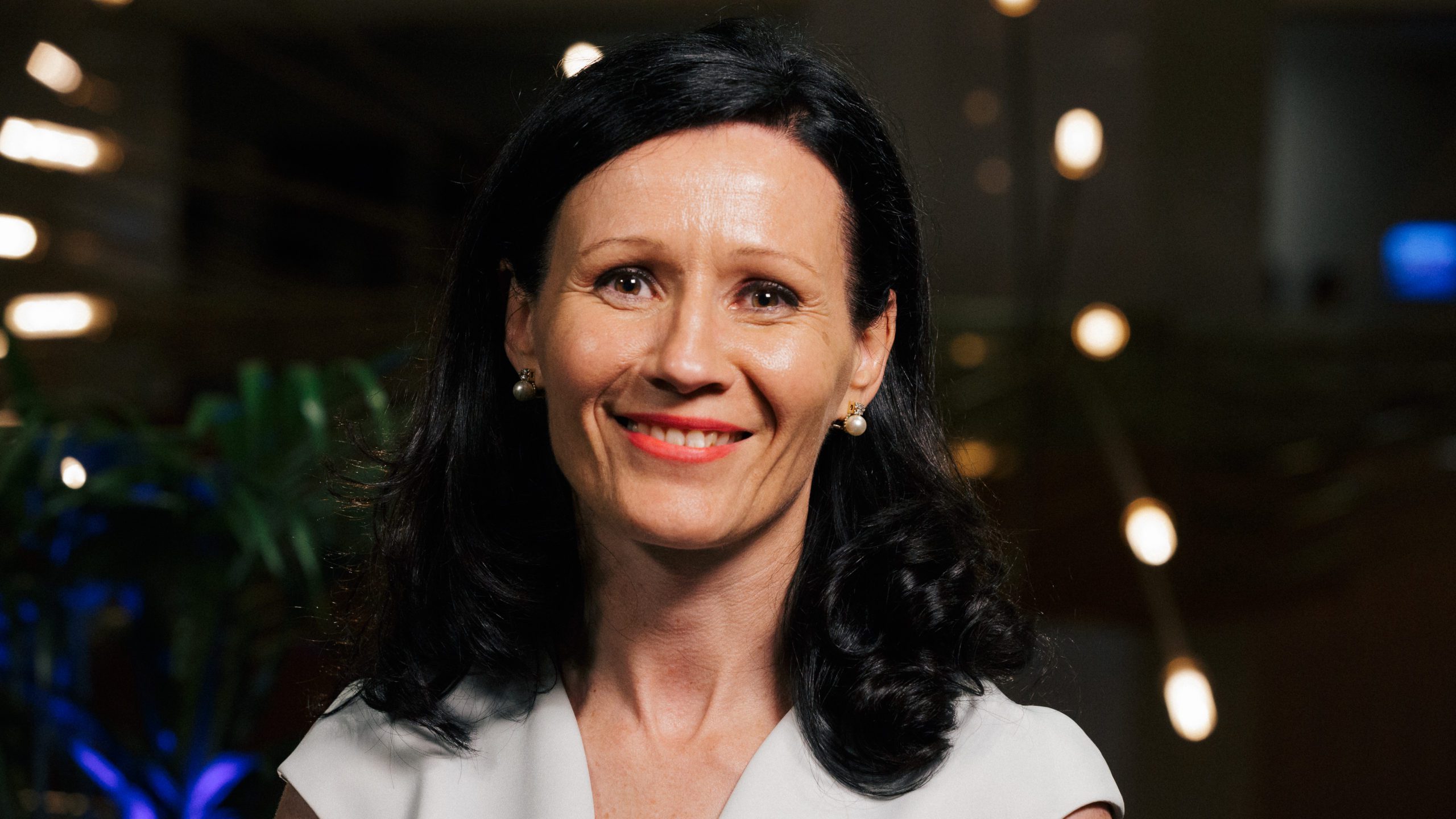MM13 trial results – bortezomib improves overall survival
A clinical trial, demonstrating the benefit of bortezomib (Velcade®) in improving response rates and overall survival in AL amyloidosis, is described as “a staggering result, almost never seen in blood cancers”.
Long-term follow up of patients enrolled in an international Phase III AL amyloidosis trial, known in Australia as ALLG MM13, and funded here by the Leukaemia Foundation, has shown that bortezomib treatment results in a ~30% absolute improvement in survival, said Associate Professor Peter Mollee, a consultant haematologist in clinical and laboratory haematology at the Princess Alexandra Hospital (Brisbane), Associate Professor with the University of Queensland Medical School, and chair of the Scientific Advisory Committee of the Australasian Leukaemia & Lymphoma Group (ALLG).

Last month, the results of the ALLG MM13 study, that tested a new standard of care for patients with AL amyloidosis, were published in the Journal of Clinical Oncology.
The randomised, controlled study of melphalan and dexamethasone versus bortezomib, melphalan and dexamethasone, investigated the haematologic response after three cycles of therapy in previously untreated patients with systemic light-chain (AL) amyloidosis.
There were 109 participants from 10 countries in the trial, including 13 Australian amyloidosis patients; just over 1/10th of the trial enrolment, which A/Prof. Mollee said was “quite a lot more than most other countries, on a per capita basis”.
The study, which opened in 2011, was run by the ALLG at four hospital sites in Australia, and was completed in January, after extended follow-up.
Read Jozsef Mulaahmetovics’ story – one of the Australians on the ALLG MM13 study
ALLG MM13 results “staggering” and produced “amazing data”
A/Prof. Mollee said the trial results showed not only that the proportion of patients who achieved a response was higher, but the responses were far deeper.
“The trial was powered to show a difference in the haematologic response – that is, how low you could push down the light chain that was causing the problem, by killing the cells that are making the light chain,” explained A/Prof. Mollee.
“The haematologic response rate overall was 79% in the bortezomib arm and 62% in the control arm, but deeper responses (technically known as a very good partial response or a complete response) were 64% in the bortezomib arm and 39% in the control arm, and these were highly significant differences.
“Response is important, but you’re always looking for a good improvement in the organs affected by the amyloidosis, and also that you may prolong the patient’s life,” said A/Prof. Mollee.
“And this is where there was a very surprising result; the magnitude of improvement in the number of patients alive in the group that got bortezomib.
“In the patients who received the bortezomib, the proportion of patients alive four years after completing their course of treatment was around 70%, whereas the proportion of patients alive in the arm that didn’t get bortezomib was around 40%.
“So, if you got the bortezomib, that’s almost one in three patients who were alive, who previously wouldn’t have been. When you look at randomised trials and cancer treatment, you rarely see that improvement in overall survival,” said A/Prof. Mollee.
“I think it’s quite a staggering result.”
“These patients had their treatment between 2011 and 2017, and now we’ve got enough follow-up to know the really important outcomes; how many patients are alive four to five years down the track.
“We know that data, and it’s amazing data.”
However, despite the results of this trial, bortezomib is not approved specifically for AL amyloidosis, in Australia or anywhere else in the world. In fact, worldwide, there are almost no countries where any drug has yet been approved for AL amyloidosis.
AL amyloidosis patients can only access bortezomib on Australia’s Pharmaceutical Benefits Scheme if they also have a diagnosis of myeloma.
“So, we’ve got a great drug, but it’s not always easily available at this stage,” said A/Prof. Mollee.
(Read more about this in our Expert Series interview with A/Prof. Mollee)
Background to the ALLG MM13 trial
The first-ever trial in AL amyloidosis in Australia – the ALLG MM8 study – looked at melphalan and dexamethasone in various doses and was supported with a $30,000 grant from the Leukaemia Foundation in 2005.
Several years later, when the results of the Phase II trial were presented at a European meeting and A/Prof. Mollee spoke to amyloidosis experts there, discussions raised the need to internationally collaborate. With AL amyloidosis being such a rare disease, single countries couldn’t conduct randomised studies due simply to not having enough amyloidosis patients to participate.
“Professor Giampaolo Merlini from the Pavia Amyloidosis Centre in Italy had an idea for a trial looking at bortezomib, and the possibility of Australia joining the trial came up,” said A/Prof. Mollee.
Bortezomib was highly effective in myeloma – a related disease – and looked likely to being effective in AL amyloidosis too.
“A trial was designed to add bortezomib to what was then the standard of care for most patients; melphalan and dexamethasone, to see if it improved outcomes in amyloidosis,” said A/Prof. Mollee.
However, the European Myeloma Network that was sponsoring the trial didn’t have the ability to sponsor it in Australia.
“We took a proposal to the ALLG to run the trial, with some funding and supply of the drug from Janssen (the manufacturer of bortezomib), and a $105,000 Grant-in-Aid from the Leukaemia Foundation,” said A/Prof. Mollee.
“This trial – ALLG MM13 – wouldn’t have happened in Australia without the Leukaemia Foundation grant!” he said.
“It was a substantial grant and it enabled us to have enough money to bring the trial to Australia.”
“When this trial was designed, pharmaceutical companies were reluctant to run a study in this disease.
“This is one of the advantages of investigator-initiated trials. Researchers can try to answer important questions in rare diseases.
“This trial broke new ground in AL amyloidosis.”

“Since this trial, a number of pharmaceutical companies have sponsored studies because they have seen that you can do trials in this patient group, the international amyloid community could work together, and there was a good chance that their drugs could get to market.
“But I don’t think any of that ever would have happened without this study (ALLG MM13) proving that the networks were there internationally to make studies work.”
Delaine Smith, CEO of the ALLG said, “the ALLG is proud to deliver research that makes a significant impact locally for Australian and New Zealand patients as well as having global reach.
“As Australia and New Zealand’s only not-for-profit cooperative trials group focusing on all blood cancers, the ALLG is privileged to offer a range of important trials in challenging disease areas such as AL amyloidosis.
“In fact, we have another AL amyloidosis trial in the pipeline to launch in 2021. The outstanding results from the ALLG MM13 trial will help deliver better lives and better treatments for patients with AL amyloidosis here and around the world.”
About bortezomib
A/Prof. Mollee said that while bortezomib was very effective, it was not for everyone and was a more difficult drug to use in patients with AL amyloidosis, compared to in myeloma patients.
“Patients with myeloma have a large amount of cancer cells, but typically speaking, preserved organ function, so their heart, kidneys and liver are all normal.
“But while the tumour bulk in AL amyloidosis is very low, the organ function is compromised because of amyloid deposition in those organs.
“This means their heart, or kidneys, or liver, or nerves aren’t functioning properly; all of which are very common issues for patients with AL amyloidosis.
“So any drug is more poorly tolerated in this group of patients than it is in a population with preserved organ function.
“If you get an infection and you’ve got amyloidosis, it’s much more difficult to handle than if you’ve got a cancer but have preserved organ function,” said A/Prof. Mollee.
On top of that, bortezomib has particular toxicity on the nerves; an organ system that’s often damaged in amyloidosis to start with, said A/Prof. Mollee, so you’ve got far less reserves to deal with the side-effects of the drug.
On the bortezomib arm of the MM13 study, A/Prof. Mollee said people did get more side-effects overall, “particularly problems with peripheral neuropathy (nerve damage) which can persist, more problems with low blood counts, and heart failure in patients with cardiac involvement”.
“Patients with AL amyloidosis need to be aware of that, but while the side-effects are more in the short-term (during the treatment period), there’s a long-term payoff.”
While A/Prof. Mollee doesn’t have information on how many patients have had to go on treatment following the trial, he said, “in the majority of patients, the light chain that causes the disease will come back again at some stage, in which case they move on to the next line of treatment”.
“There are more and more options becoming available for patients whose AL amyloidosis has come back. There is no doubt that we are making real progress in this rare disease which is great news for patients,” said A/Prof. Mollee.
Last updated on January 3rd, 2023
Developed by the Leukaemia Foundation in consultation with people living with a blood cancer, Leukaemia Foundation support staff, haematology nursing staff and/or Australian clinical haematologists. This content is provided for information purposes only and we urge you to always seek advice from a registered health care professional for diagnosis, treatment and answers to your medical questions, including the suitability of a particular therapy, service, product or treatment in your circumstances. The Leukaemia Foundation shall not bear any liability for any person relying on the materials contained on this website.